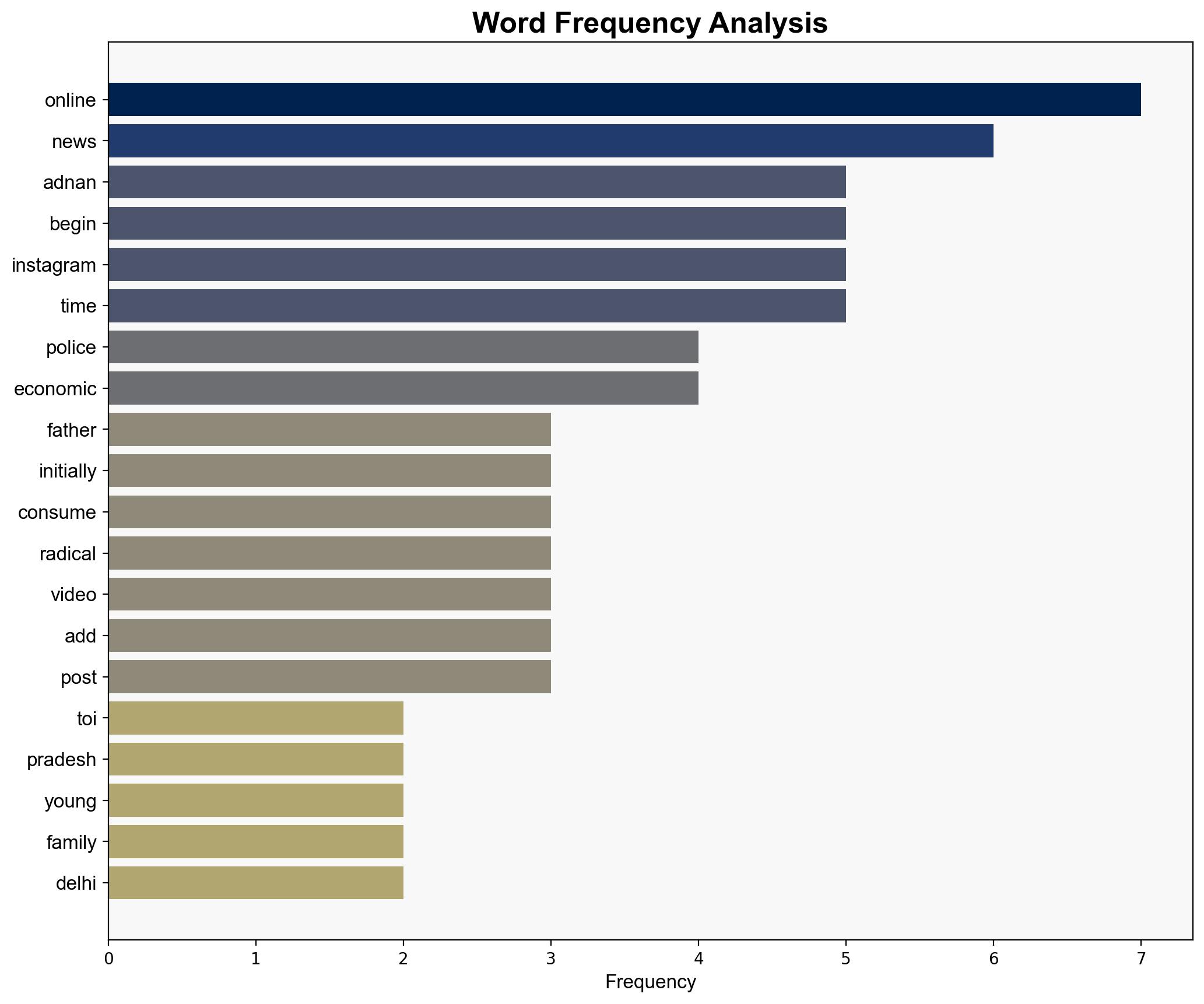Two young men one dream gone astray Inside the lives of alleged IS recruits from Delhi and MP – The Times of India
Published on: 2025-10-25
Intelligence Report: Two young men one dream gone astray Inside the lives of alleged IS recruits from Delhi and MP – The Times of India
1. BLUF (Bottom Line Up Front)
The most supported hypothesis is that online radicalization networks are increasingly effective in recruiting young individuals from diverse backgrounds in India. This conclusion is drawn from the structured analysis of the two cases presented. The confidence level in this assessment is moderate due to potential gaps in intelligence and the complexity of online radicalization processes. Recommended actions include enhancing digital monitoring capabilities and community-based intervention programs to prevent radicalization.
2. Competing Hypotheses
Hypothesis 1: The individuals were primarily radicalized through online networks, with minimal offline influence. This hypothesis suggests that the digital platforms played a central role in their radicalization, facilitated by targeted propaganda and direct communication with handlers.
Hypothesis 2: The individuals were influenced by a combination of online and offline factors, including personal grievances, socio-economic conditions, and community dynamics, which collectively contributed to their radicalization.
Using the Analysis of Competing Hypotheses (ACH) 2.0, Hypothesis 1 is better supported by the available data, particularly the emphasis on Instagram and other social media platforms as primary vectors for radical content dissemination and recruitment.
3. Key Assumptions and Red Flags
– **Assumptions:** It is assumed that the online content consumed was the primary driver of radicalization. There is also an assumption that the individuals had no prior significant offline radical influences.
– **Red Flags:** The lack of detailed information on offline interactions and community influences is a significant gap. Additionally, the potential bias in relying heavily on police reports without corroborative evidence from independent sources.
4. Implications and Strategic Risks
The growing reach of online radicalization networks poses significant national security threats, potentially leading to increased domestic terrorism incidents. The psychological impact on youth and the potential for these networks to exploit socio-economic vulnerabilities are critical concerns. There is also a risk of these networks evolving to evade detection, complicating counter-terrorism efforts.
5. Recommendations and Outlook
- Enhance digital surveillance and monitoring of extremist content on social media platforms.
- Develop community outreach programs to address and mitigate factors contributing to radicalization.
- Scenario Projections:
- Best Case: Effective intervention programs reduce online radicalization rates.
- Worst Case: Escalation in domestic terrorist activities due to unchecked online radicalization.
- Most Likely: Continued attempts at radicalization with sporadic success, necessitating ongoing vigilance.
6. Key Individuals and Entities
– Adnan from Etah, Uttar Pradesh
– Adnan Khan from Bhopal, Madhya Pradesh
– Abu Ibrahim al-Qureshi (Syria-based handler)
7. Thematic Tags
national security threats, cybersecurity, counter-terrorism, regional focus




